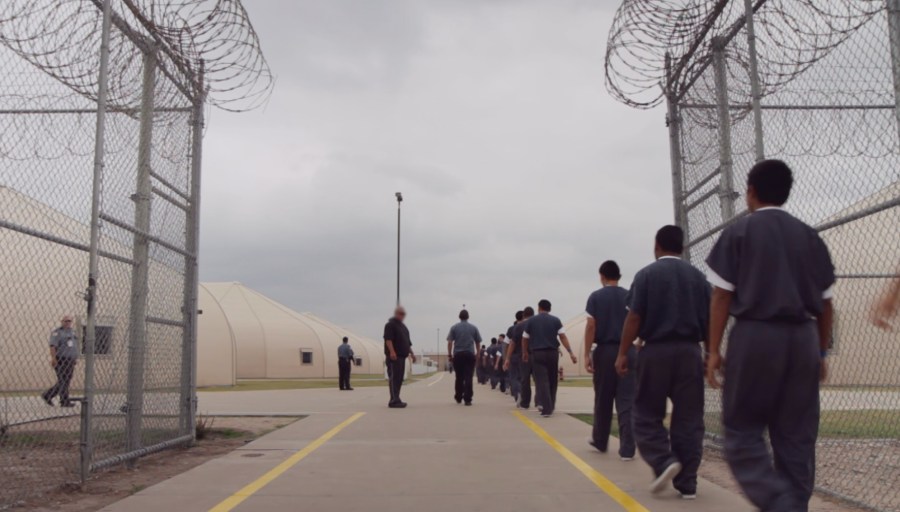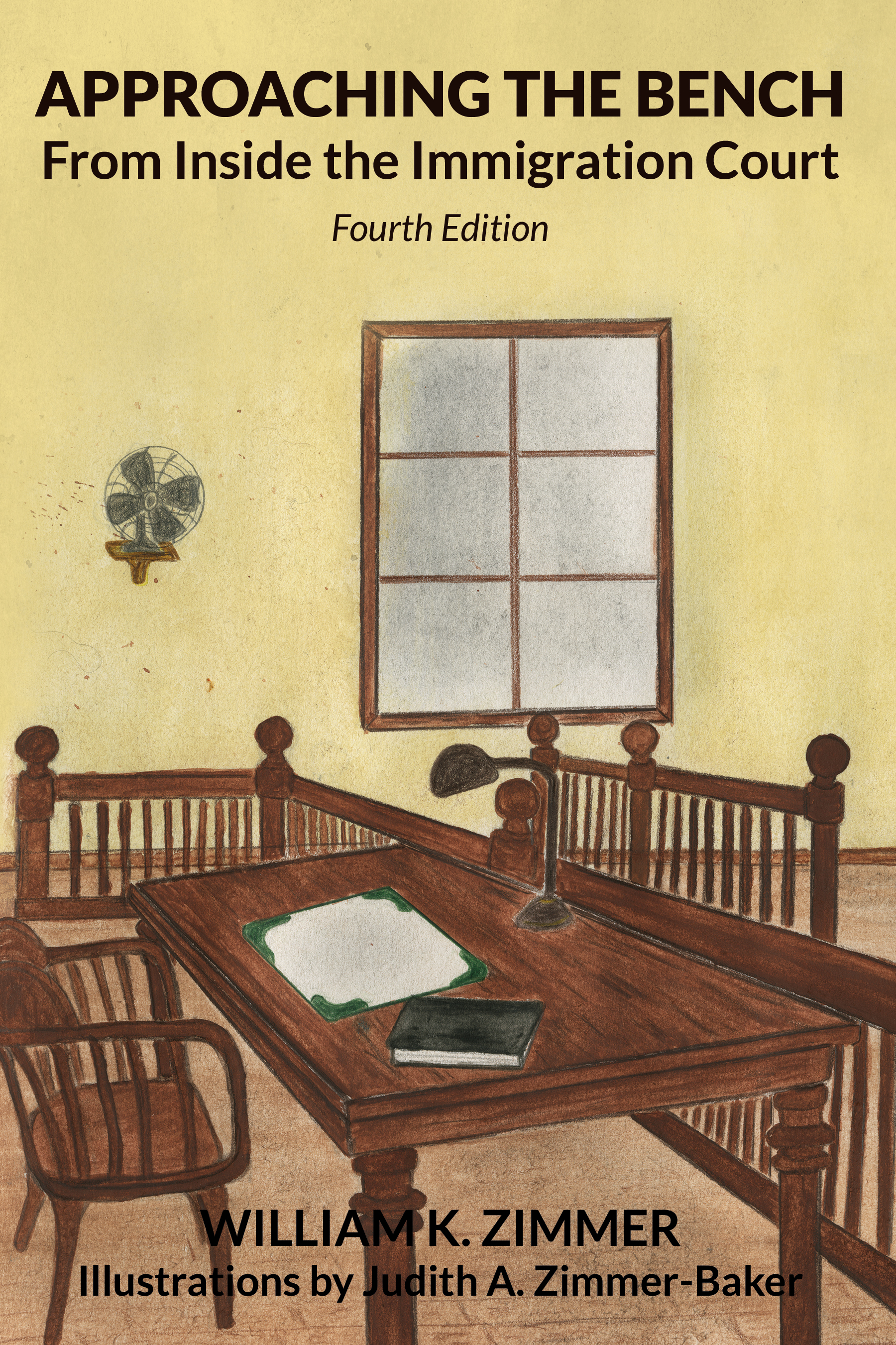Aliens With Reinstated Removal Orders Ineligible For Bond Redetermination Hearing

On writ of certiorari to the United States Court of Appeal For The Fourth Circuit, Justice Samuel Alito delivered the opinion of the United States Supreme Court. Tae D. Johnson, Acting Director of U.S. Immigration and Customs Enforcement, et al., Petitioners v. Maria Angelica Guzman Chavez, et al., 594 U.S. __ (2021) No. 19-897.
The respondents (who are defending against the government appeal) are aliens who were removed from the United States and later reentered without authorization. Guzman Chavez v. Hott, 940 F. 3d 867, at 870 (4th Cir. 2019).
When the Department of Homeland Security ("DHS") again discovered the respondents in the United States, it reinstated their prior removal orders. Guzman Chavez v. Hott, at 870–871.
Each respondent expressed a fear of returning to his or her home country and was referred to an asylum officer for a reasonable fear interview. Guzman Chavez v. Hott, at 871. In each case, the asylum officer determined that the respondent had a reasonable fear of persecution or torture and referred the respondent to an Immigration Judge for withholding only proceedings under section 241(b)(3) of the Act. Guzman Chavez v. Hott, at 871.
All were ultimately detained by the DHS. Guzman Chavez v. Hott, at 871.
The respondents then sought release on bond while their withholding only proceedings were pending.
The Government opposed release, maintaining that the respondents were detained under section 241 of the Act, not section 236 of the Act, and therefore were not entitled to bond hearings.
The respondents filed two writs of habeas corpus (a writ requiring a detained person to be brought before a judge, generally to challenge the grounds for detention) in the Eastern District of Virginia seeking a declaration that section 236 of the Act rather than section 241 of the Act governs their detention, as well as an injunction ordering the Government to grant them individualized bond hearings consistent with 8 C.F.R. §1226.3
In both cases, the District Court entered summary judgment in favor of the respondents, concluding that section 236 of the Act governs their detention. See Romero v. Evans, 280 F. Supp. 3d 835, at 849 (2017); Diaz v. Hott, 297 F. Supp. 3d 618, at 623, 628 (2018).
The Government appealed both decisions, and the Fourth Circuit Court of Appeal affirmed the decisions of the District Court (over a dissent by Judge Julius Richardson) again in favor of the respondents. See Guzman Chavez v. Hott, 940 F. 3d 867, at 882. Thus, the Fourth Circuit Court of Appeal agreed with the Second Circuit Court of Appeal that section 236 of the Act which provides access to a bond redetermination hearing in immigration court applies when aliens with reinstated removal orders and pending applications for withholding only are detained. However, the Fourth and Second Courts of Appeal disagreed with the Third, Sixth, and Ninth Circuit Courts of Appeal with regard to the same issue. Compare Guerra v. Shanahan, 831 F. 3d 59, at 64 (2nd Cir. 2016), with Martinez v. LaRose, 968 F. 3d 555, at 559 (6th Cir. 2020); Guerrero-Sanchez v. Warden York County Prison, 905 F. 3d 208, at 213 (3rd Cir. 2018); Padilla-Ramirez v. Bible, 882 F. 3d 826, at 832 (9th Cir. 2017).
The government appealed again, and the United States Supreme Court granted certiorari to resolve the split among the circuit courts. Albence v. Guzman Chavez, 590 U. S. ___ (2020).
Ultimately, the United States Supreme Court reversed the Fourth Circuit Court of Appeal in favor of the government, holding that eligibility for bond relating to aliens whose removal orders have been reinstated under section 241(a)(5) of the Act, even after filing a withholding only application, is governed by section 241 of the Act, and not section 236 of the Act. As a result, the respondents became ineligible for a bond redetermination hearing and release from custody during the pendency of their withholding only application.
At this point, it might be helpful to recite the relatively succinct language of section 241(a)(5) of the Act:
If the Attorney General finds that an alien has reentered the United States illegally after having been removed or having departed voluntarily, under an order of removal, the prior order of removal is reinstated from its original date and is not subject to being reopened or reviewed, the alien is not eligible and may not apply for any relief under this Act, and the alien shall be removed under the prior order at any time after the reentry.
It might also be helpful to recite the withholding only language of section 241(b)(3)(A) of the Act which mandates that:
Notwithstanding paragraphs (1) and (2), the Attorney General may not remove an alien to a country if the Attorney General decides that the alien's life or freedom would be threatened in that country because of the alien's race, religion, nationality, membership in a particular social group, or political opinion.
Sections 241(b)(1) and (2) of the Act cited above at the beginning of section 241(b)(3)(A) simply describe countries to which arriving aliens (1) and other aliens (2) may be removed.
Finally, for easy reference and clarity, section 236(a) of the Act states that:
On warrant issued by the Attorney General, an alien may be arrested and detained pending a decision on whether the alien is to be removed from the United States . . . [emphasis added]
Section 236(a) of the Act goes on to provide that the Attorney General may "continue to detain" or "release" the detained alien on bond or parole, setting forth specific conditions.
Justice Alito, writing for the majority, reasoned that:
Section 236(a) of the Act provides that “an alien may be arrested and detained pending a decision on whether the alien is to be removed from the United States.” (emphasis added)
Section 241(a)(1)(A)(B), (2) of the Act, by contrast, authorizes detention “when an alien is ordered removed” and enters the “removal period,” which begins on “[t]he date the order of removal becomes administratively final.”
Thus, two questions control whether section 241 of the Act or section 236 of the Act govern bond eligibility of aliens whose removal orders have been reinstated after illegal reentry:
- whether the respondents were “ordered removed,” and
- whether their reinstated removal orders were “administratively final.”
In the record under review, the answer to both questions is yes.
First, it is undisputed that each respondent was previously removed pursuant to a valid order of removal. After the respondents later reentered the United States without authorization, those prior orders were reinstated from their original dates under section 241(a)(5) of the Act.
Those reinstated orders are not subject to reopening or review, nor are the respondents eligible for discretionary relief under the Act. Instead, according to section 241(a)(5) of the Act, they “shall be removed under the prior order at any time after the reentry.”
Accordingly, the respondents’ prior orders, reinstated under section 241(a)(5) of the Act, show that the respondents were ordered removed.
Second, the respondents’ reinstated removal orders are “administratively final.”
It is clear that the DHS need not wait for the alien to seek, and a court to complete, judicial review of the removal order before executing it.
Rather, once the Board of Immigration Appeals ("BIA") has reviewed the order (or the time for seeking the BIA’s review has expired), the DHS is free to remove the alien unless a court issues a stay. That reinforces why Congress included “administratively” before the word “final” in the first provision. See section 241(a)(1)(B) of the Act ("The removal period begins on the latest of the following: (i) The date the order of removal becomes administratively final . . .").
The respondents do not contest that their prior removal orders have long been “administratively final,” as the term is understood.
Therefore, since the reinstated removal orders are administratively final, detention provisions under section 241 of the Act are a "natural fit" for aliens subject to reinstated orders of removal.
With regard to withholding only, under section 241(b)(3) of the Act, an alien applies for withholding only relief relating to a particular country. See 8 CFR §§208.31(a), 1208.31(a).
If an Immigration Judge grants an application for withholding of removal, he prohibits the DHS from removing the alien to a particular country. The Immigration Judge's grant of any withholding of removal application does not prohibit the DHS from removing the alien to any other country that is not forbidden in the order granting withholding of removal. In other words, when an Immigration Judge grants a withholding only application, the removal order is not vacated or otherwise set aside. It remains in full force, and the DHS retains the authority to remove the alien to any other country authorized by the statute. See 8 C.F.R. §§208.16(f), 1208.16(f), 1240.12(d).
In short, withholding only relief is country-specific. It relates to where an alien may be removed. It says nothing about whether or not an alien is to be removed from the United States.
The respondents’ argument—that the decision about whether an alien “is to be removed” remains “pending” for purposes of applying section 236 of the Act until the DHS is certain that it will be able to carry out that removal—is at odds with the statutory text of section 241 of the Act and Zadvydas v. Davis, 533 U. S. 678 (2001) (which disapproved indefinite detention resulting from the indefinite extension of the post 90-day removal period in section 241 of the Act) because it is not plausible that an alien is detained under section 236 of the Act instead of section 241 of the Act while the DHS resolves practical problems associated with the execution of a removal order. In other words, it is not possible for a removal order (particularly, an administratively final removal order) to be pending in preliminary immigration proceedings governed by section 236 of the Act. Section 241 of the Act, not section 236 of the Act, is the part of the Act that anticipates and addresses problems associated with the execution of removal after a removal order becomes administratively final.
A grant of withholding only relief “means only that, notwithstanding the order of removal, the noncitizen may not be removed to the designated country of removal, at least until conditions change in that country,” and that “the noncitizen still may be removed at any time to another country.” Nasrallah v. Barr, 590 U. S. ___, ___ (2020) (slip op., at 8).
The opening text of section 241(a)(1)(A) of the Act (i.e. “Except as otherwise provided in this section, when an alien is ordered removed, the Attorney General shall remove the alien from the United States within a period of 90 days.”) (emphasis added) relates to the length of the removal period, and it sets the default for that period at 90 days. It does not, as the respondents (and Justice Breyer's dissent, with whom Justices Sotomayor and Justice Kagan joined) suggest, relate to or influence when the 90 day removal period begins. The triggers that begin the 90 day removal period appear in section 241(a)(1)(B) of the Act.
In short, the statutory text makes clear that section 241 of the Act, not section 236 of the Act, governs the respondents’ detention, and none of the respondents’ counterarguments can overcome that plain text.
The majority opinion begins with an excellent summary of how reinstatement of removal orders and withholding only applications are handled in routine practice. So, unlike some legally complex analyses of technical legal issues, Johnson v. Guzman Chaves, et al provides a breath of fresh air in terms of clarity and deserves reading by those who are interested, but unfamiliar with the immigration law.
Hopefully, this nutshell summary will provide some clarity and save some time for those who are busy with more emergent matters.

